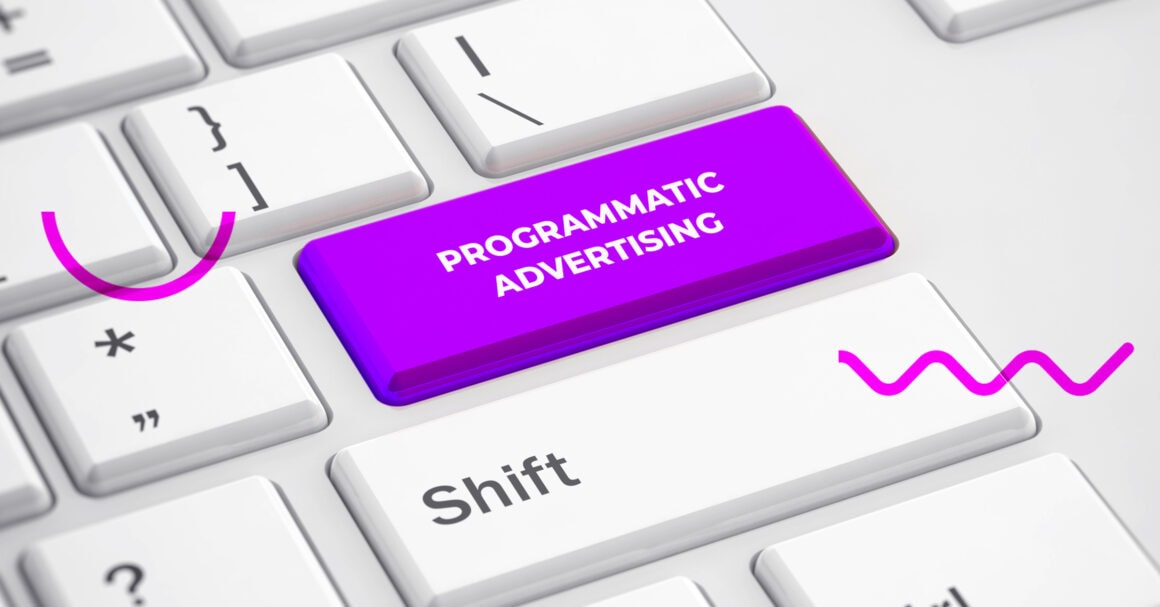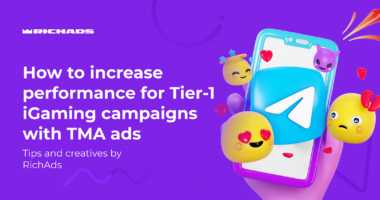You’ve probably heard the word “programmatic” thrown around the digital ad space, along with terms such as Header Bidding and RTB (real time bidding). This term puzzles newbies and veterans of the ad space alike.
Some media buyers even use programmatic advertising without fully understanding what it is and how it differs from the old advertising methods. Luckily, it only sounds complicated.
Let’s break it down into several sections to show you just how simple yet powerful programmatic advertising can be:
- What is programmatic advertising?
- How does programmatic work?
- What are the benefits of programmatic ad buying?
- Who does programmatic advertising work for?
- How does it fit into the whole picture
What is Programmatic Advertising: Definition
In layman’s terms, programmatic advertising is an automated way of buying and selling ad space online. The selling side uses platforms that sell inventory on publishing websites (SSP) while the buying side uses platforms that buy the inventory to place ads on publisher websites.
The entities involved in these transactions include but are not limited to DSPs, SSPs, Advertisers, and Publishers. You don’t need to be fully briefed on what all those are to understand the basics of programmatic advertising buying.
Well, if programmatic advertising is just an automated way to broker deals, how did advertising work before? In the good old times, the process was mostly manual and involved RFPs (request for proposals), insertion orders, face-to-face negotiations, and sometimes even signing an actual paper contract. Meeting someone in person to buy digital ad space? Ew. Can you imagine?
With programmatic advertising, not only do parties never have to meet each other face to face, but also all transactions occur in a few milliseconds across all the platforms.
How Does Programmatic Advertising Buying Work?
So, we get the general gist of it now. It’s automated and it’s fast. But how does it actually work? Let’s break it down step by step using a real-life programmatic native advertising example:
- Let’s say your friend Tony owns a dog food store and wants to advertise his store on dog-related websites through native ads.
- Your other friend Lucas just got a dog and visits websites to look for tips on how to train his new dog.
- Your girlfriend Claudia, owns the website “How-To-Train-Your-Dog.com” and wants to make some money selling advertising space there for various ad formats like native, display, video, search, and more.
Now let’s see how Tony (the Advertiser), Lucas (the user), and Claudia (the publisher) fit into the programmatic native advertising landscape:
- Claudia sets up “How-To-Train-Your-Dog.com” on an SSP (Supply-Side Platform), so the SSP sells ad space on her website for her. The SSP lets advertisers know through DSPs that there is an ad space available to buy, and in this case, the ad space will be viewed by Lucas who’s interested in dogs and is visiting a dog website. This is valuable information for an advertiser like Tony, who is only looking to buy ad space on websites about dogs.
- Lucas visits “How-To-Train-Your-Dog.com”, which Claudia has set up to use programmatic advertising.
- The SSP analyses Lucas’s visit to determine his user characteristics like geo, age, or other determining factors. Most importantly, the visit data has demographic information, such as the fact that Lucas is interested in dogs since he’s visiting a dog-related website.
- The SSP tells various DSPs about this visit and that it’s up for sale.
- The DSP that Tony is using knows that this ad space is perfect for him and bids on his behalf based on campaign settings he saved beforehand. Since Tony wants to use native advertising to promote his store, the relatable dog content on Claudia’s website is prime real estate for him to purchase.
- The SSP receives bids from various DSPs, and depending on their bidding strategy (Waterfall bidding, Header bidding, etc.) picks the winner. It turns out Tony’s DSP wins the auction for him.
- The SSP then displays Tony’s ad for his dog food store on “How-To-Train-Your-Dog.com” right below the article Lucas is reading. Luckily, Lucas is out of dog food, clicks the ad, and purchases on Tony’s website.
The whole process from Lucas visiting the website to him seeing the ad takes a few milliseconds while the page is loading.
What are the benefits of programmatic advertising?
The main benefit is scale. No paper contracts and in-person meetings result in a very fast and efficient process that is beneficial for both the publisher and the advertiser. Thanks to the real time bidding auction model that is involved in programmatic ad buying, the publishers get a guarantee that they get the best price for their ad space possible.
Advertisers on the other hand get access to huge ad inventories that they can precisely target and reach real users in no time. When it comes to price, most DSPs follow the second price auction model. In this model, advertisers bid for a chance to display an ad on a particular web page and the highest price wins BUT the winner pays the second highest price, not the one they have actually bid on.
This keeps costs in check and allows more money to be spent on additional ads thus fueling the growth of digital advertising space.
This adds efficiency to the list of benefits of programmatic advertising. Additional benefits include relevancy, where both sides have a guarantee that the ads displayed to the target audience fit the needs of an advertiser and a profile of a publisher.
Who does programmatic advertising work for?
The online advertising space is a complex one with various platforms and stakeholders, where beginner digital marketer may feel lost. To make things simpler, let’s go over the popular actors in the programmatic advertising space.
Demand side platform (DSP)
Demand side platforms work for advertisers, and they allow them to serve ads on ad inventory from multiple ad exchanges. Advertisers can leverage programmatic buying to get the best ad space from many ad exchanges for the best price thanks to real time bidding, without the hassle of signing up to each platform separately.
The added benefit is ad exchanges usually require a minimum top-up amount, so signing up for multiple ad exchanges may result in freezing significant resources, while in DSPs you usually top up one DSP account that gives you access to all networks.
DSPs enable to target specific audiences. They do so by gathering some basic statistical data on their visitors. The auction takes place between advertisers which targeting criteria match a current visitor’s profile.
Supply side platform (SSP)
Supply side platforms are used by publishers, so people that have ad inventory to sell, to aggregate it and, manage and sell for the best price. Publishers must place a pixel code from an SSP to correctly serve ads.
DSPs vs SSPs
It is sometimes hard to grasp the difference between the two platforms. The most important thing to know is that SSPs work for publishers to maximize their earnings while DSPs are built for advertisers.
Data management platform
These types of platforms help advertisers understand, analyze and manage their data by creating detailed user profiles.
Ad exchanges
This is the place where publishers and advertisers can meet. This is also the platforms that connects to SSPs and DSPs. Overall, the whole landscape of the programmatic ad tech is complex and interconnected. There are different deals available in the digital advertising space: header bidding, private deals and private marketplace, traffic arbitrage and so on. It is important for marketers to figure out where they fit in all of this.
RTB vs programmatic buying
Real time bidding, or RTB, is the form of programmatic ad buying but there are other methods that also fall into the programmatic category. There are also, as mentioned, private and usually invitation-only marketplaces or exclusive deals available for bigger advertisers, and programmatic direct. This type of deal is reserved for bigger players, and it enables an advertiser to purchase a pre-agreed number of impressions for a fixed price.
Programmatic Digital Advertising: Conclusion
Now you know what programmatic advertising is and how it facilitates a website visit being sold by a publisher to an advertiser to render a digital ad. The automated transactions and speedy process are only a few of the advantages.
It’s definitely more than that. Programmatic advertising incorporates traffic data, as well as digital targeting methods to deliver impressions more accurately, which in the end adds up to higher ROI. That’s why it shouldn’t be a surprise that around 90% of all ads will be bought programmatically in 2022 which amounts to a healthy $123.22. No doubt, the future for programmatic advertising is bright. With more ad tech coming to the scene, it’s constantly evolving and becoming a better and cheaper performance marketing strategy for advertisers and publishers alike.
We can talk about ads all day long. Different kinds, formats, which fit best, where to buy them and all that good stuff. But you need to remember one thing – at the end of the day, the kind of ad or whether you bought it programmatically won’t matter if it doesn’t perform.
In order to put out a successful campaign, you need to build a plan, and a strategy around your ads. The only way to do that is by gathering data. How? By tracking with a tool like Voluum for example. It’ll help you gather tangible information about what is going on with your campaigns and that will easily become the backbone of your planning. There are plenty of options for tracking parameters that are most relevant to your business and features designed specifically for making your life easier, so there’s no excuse.



